2019 Crown-Indigenous Relations Ministerial transition binder
Table of contents
- Introduction
- Indigenous landscape
- Departmental structure
- What we do
- Renewal of Crown-Indigenous relationships
- Negotiation of comprehensive land claims, specific claims and self-government agreements
- Management and implementation of existing agreements and treaties
- Resolution of childhood claims
- Indigenous institutions and governance modernization
- Northern governance
- Northern policy and programs
- Northern science and technology
- Northern land, resources and environmental management
- Issues currently in the public eye
- Indigenous partners
- Provincial and territorial ministers
- Annex A: Acts and legislation
Introduction
The role and contributions of Indigenous peoples in Canada – First Nations, Inuit and Métis – are significant, rich and far-reaching throughout Canadian society, despite a complex and troubled historical relationship with the Government of Canada that negatively impacted communities and ways of life. The former Department of Indigenous and Northern Affairs was viewed by a broad number of players to be rooted in this troubled colonial history, leading to the dissolution of Indigenous and Northern Affairs Canada and the creation of two new departments on August 28, 2017: Crown-Indigenous Relations and Northern Affairs Canada and its sister department, Indigenous Services Canada, each with related but separate mandates. The responsibilities of Indigenous and Northern Affairs Canada were divided between the new departments and continue to evolve as part of a comprehensive effort to stand-up new ways of doing things.
Crown-Indigenous Relations and Northern Affairs Canada's primary responsibility is to guide and coordinate the federal government's relationship with Indigenous peoples, finding a constructive path forward in addressing Indigenous peoples' claims and interests alongside those of government. The Department focuses its efforts on supporting Indigenous communities so that they may be better positioned to govern their own affairs, as well as promote the self-reliance, prosperity and well-being of the residents and communities of the North. This work is always conducted in balance with the broader national interest, and in partnership with other government departments to achieve a coherent federal approach to the Crown-Indigenous relationship. The Department works with other federal departments, provinces, territories, industry and other Canadians to shape the Government of Canada's agenda in a manner that balances approaches while bringing the broader public interest into conversations that best support the needs and expectations of First Nations, Inuit and Métis peoples in Canada. In parallel, Indigenous Services Canada's primary responsibilities are the delivery of services and programs for and with Indigenous communities, such as health care, education, social programs and economic development. The emphasis is on closing the socio-economic gap between Indigenous and non-Indigenous people and building up the capacity of Indigenous communities to accelerate self-determination. While having two separate mandates, Crown-Indigenous Relations and Northern Affairs Canada and Indigenous Services Canada are closely connected due to their complementary objectives, as well as through the sharing of some internal services.
This Briefing Book is intended to introduce you to the mandate and structure of Crown-Indigenous Relations and Northern Affairs Canada and provide you with an outline of some of the issues that are shaping how the Department moves forward. There are other matters beyond this overview on which you may wish to receive a briefing at a later time. My officials and I will be pleased to brief you and your office in detail on the content presented in this Briefing Book and I look forward to engaging with you on the wide range of issues that occupy Crown-Indigenous Relations and Northern Affairs Canada.
Daniel Watson
Deputy Minister
Crown-Indigenous Relations and Northern Affairs Canada
Mandate
A) Crown-Indigenous Relations
The Department is the primary liaison for the Government of Canada in engaging with Indigenous peoples and organizations, while also helping shape the overall agenda regarding Indigenous peoples with other federal partners. To those ends, the Department works towards supporting local governance so that First Nations, Inuit, and Métis peoples can be better positioned to govern their own affairs – referred to as "self-determination".
The Department coordinates the Government of Canada's relationship with National Indigenous Organizations; namely the Assembly of First Nations, the Métis National Council, Inuit Tapiriit Kanatami, the Congress of Aboriginal Peoples, and the Native Women's Association of Canada, as well as with other more local/regional Indigenous organizations and rights holders.
The Department supports Indigenous self-determination, through the negotiation and implementation of self-government and comprehensive land claims agreements, the recognition and implementation of Indigenous and treaty rights, as well as through the settlement of claims relating to lands and historical grievances. It also consults and works with Indigenous peoples, provinces and territories, and other stakeholders on policies, initiatives and legislation that could affect Indigenous communities.
The Department has strong relationships and collaborates closely with other federal departments, such as Indigenous Services Canada, Fisheries and Oceans Canada and Employment and Social Development Canada, that also support the Indigenous population.
The Department guides the Government's work to create a new relationship with First Nations, Inuit and Métis using different approaches to respect the unique situations of each of these three groups. The Department, with the support of the Department of Justice, plays a leadership role in ensuring that the Government of Canada is respecting its obligations as set out in agreements and the application of section 35 of the Constitution Act, 1982 which provides constitutional recognition and affirmation of the Indigenous and treaty rights of Indigenous peoples in Canada.
Statutory authorities of the Minister of Crown-Indigenous Relations
The Minister of Crown-Indigenous Relations has authority, in full or in part, over laws covering a wide range of subjects and responsibilities. The majority of these laws are related to the implementation of comprehensive land claims (e.g. Nisga'a Final Agreement Act, Nunavut Act) and self-government agreements where Indigenous groups have assumed authority for governance, land and resource management (e.g. Westbank First Nation Self-Government Act, Sioux Valley Dakota Nation Governance Act). The Minister also has authority over laws that bring First Nations out from under specific provisions of the Indian Act, such as for land management, fiscal management and local taxation powers (e.g. First Nations Land Management Act, First Nations Fiscal Management Act). The Minister continues to retain full accountability to Parliament for all of the statutes for which he or she is responsible. A complete list of statutes can be found in Annex A.
B) Northern Affairs
The Department is also responsible for leading the Government of Canada's work in the North through the development, implementation and coordination of federal policy across departments in the North. It also leads the negotiation and implementation of the transfer of federal responsibilities to Territorial Governments (referred to as "devolution"), manages a number of federal regulatory and other functions not devolved through the Territorial Acts, supports the negotiation and implementation of Indigenous land claims and self-government agreements, and delivers federal programs and initiatives in the region.
The Crown-Indigenous Relations and Northern Affairs Act outlines the Department's responsibilities over the administration of lands in Yukon, the Northwest Territories and Nunavut, as well as the work to complete the devolution of authorities to territorial governments. The resource management regimes in the North are implemented in large part by boards made up of representatives from Indigenous governments and organizations, the territorial governments, and the federal government as defined by land claims agreements. The Department maintains provincial-like responsibility for management of lands and water in Nunavut, which includes the approval of most water licences and land use permits issued in the territory. The Department is also responsible for the legislation governing environmental assessments and holds some decision-making powers involving environmental assessments and land use planning, as well as retaining responsibility for the management of offshore resources including oil and gas in all three territories.
Statutory authorities of the Minister responsible for Northern Affairs
The Minister of Northern Affairs has authority specifically defined by sections 11 to 18 of the Department of Crown-Indigenous Relations and Northern Affairs Act, as well as over, in full or in part, statutes relating to Canada's territories (e.g. Nunavut Act, Yukon Act), management of Northern land, resources and environment (e.g. Territorial Lands Act, Mackenzie Valley Resource Management Act), the management of Northern regulatory regimes (e.g. Northwest Territories Waters Act); and Northern and polar science (e.g. Canadian High Arctic Research Station Act). A complete list of statutes relating to Northern Affairs can be found in Annex A.
Quick overview of responsibilities of Crown-Indigenous Relations and Northern Affairs Canada and Indigenous Services Canada
| Crown-Indigenous Relations and Northern Affairs Canada | Indigenous Services Canada |
|---|---|
|
Crown-Indigenous Relations
Northern Affairs
|
|
Indigenous landscape
Indigenous peoples in Canada consist of three main groups: First Nations (also referred to as Indians in laws such as the Indian Act), Inuit and Métis. There are many cultural and legal differences between and within each of these three groups.
First Nations
First Nations are not a single group but several different groups speaking different languages and having a wide range of traditions and cultural practices. Despite this diversity, First Nations share similar experiences as a result of their interactions with the Government of Canada, life on reserves and the impact of specific laws, such as the Indian Act. This Act, which is a piece of federal legislation, legally defines which individuals are entitled to be registered as "Indians" based on their ancestry. These individuals are typically referred to as "status" or "registered" Indians. Section 6 of the Act provides the basis for how status is or can be passed down from parents to children. Status and place of residence are key in determining an individual's eligibility for federal programs and services.
Within First Nation communities, there is also a difference between Status Indians who are recognized as members of a First Nation community (also known as a "band") versus non-band members. Through provisions of the Indian Act, some individual communities determine how band membership is established. Band membership may confer a variety of benefits, including acceptance as a member of the community and its culture and access to band-administered programs and services.
Another distinction lies between Treaty Indians – individuals who are members of First Nations having signed an agreement relating to land surrender or use with the Crown- and Non-Treaty Indians. Specific rights and benefits, such as treaty rights to hunt and fish or annual treaty annuity payments under the terms of the treaties, are available to Treaty Indians whether or not they live on reserve.
The Assembly of First Nations is a national advocacy organization that generally represents the interests of over 634 First Nation communities (over 900,000 people) across the country.
Inuit
Inuit are the Indigenous peoples originating in Northern Canada. Most Inuit reside in Nunavut, the Mackenzie Delta area of the Northwest Territories (Inuvialuit), as well as northern parts of Quebec (Nunavik) and Labrador (Nunatsiavut). Since the conclusion of land claims agreements with Inuit have been settled, they are most readily identified as beneficiaries of one of four land claim agreements:
- the Inuvialuit Final Agreement (1984)
- the Nunavut Land Claims Agreement (1993)
- the Labrador Inuit Agreement (2005)
- the Nunavik Inuit Land Claims Agreement (2006) / the Inuit-specific part of the Northern Quebec James Bay Agreement (1975)
Inuit Tapiriit Kanatami is the national voice of approximately 55,000 Inuit living primarily in 53 communities in four Inuit land claim regions (Inuvialuit Settlement Region – Northwest Territories, Nunavut, Nunavik - Northern Quebec, and Nunatsiavut - Northern Labrador).
Métis
While there is no single or definitive legal definition of Métis, it is generally accepted that Métis are the descendants of First Nation women and European men who formed their own unique culture, traditions, language and way of life in distinct communities separate from other Indigenous and European communities.
Several court decisions have helped define Métis rights, such as the 2003 Powley decision where the Supreme Court of Canada held that for the purpose of establishing Indigenous rights, the term "Métis" in section 35 of the Constitution Act refers to distinctive peoples who, in addition to their mixed ancestry, developed their own customs, way of life, and recognizable group identity separate from their Indian and European forebears. In the 2013 Manitoba Metis Federation case, the courts signaled that the federal Crown needs to engage with the descendants of the Métis people of the Red River Valley in a meaningful way.
Beyond those with defined Métis rights, a broader community of Métis of mixed Indigenous-European ancestry is located throughout Canada, including outside the Métis homeland east of Ontario. Some members of this community are represented by the Congress of Aboriginal Peoples.
The Métis National Council represents five Governing Members: the Métis Nation of Ontario, the Manitoba Metis Federation, the Métis Nation-Saskatchewan, the Métis Nation of Alberta and the Métis Nation British Colombia.
Non-Status Indians
Non-Status Indians are persons who identify themselves as Indians, but who are not eligible to be registered under the Indian Act as they do not meet the criteria established in section 6 of the Act and are not eligible for federal benefits flowing from registration. This population resides across Canada, and the vast majority live off reserve.
Demographics
The Indigenous population is younger than the overall Canadian population and is growing more rapidly than any other segment of the Canadian population.
In the 2016 National Household Survey, 1.6 million people in Canada identified themselves as Indigenous, representing 4% of the Canadian population.
| Registered Indian | 49% (820,120) |
| Métis | 32.1% (537,855) |
| Non-Status Indian | 13.9% (232,380) |
| Inuit | 3.8% (64,325) |
| Other Indigenous* | 1.1% (19,100) |
| Total | 100.0% |
|---|
*Other Indigenous refers to respondents who reported more than one identity group, and those who reported being a band member with no Indigenous identity and no registered Indian status.
In 2016, 40% of the Registered Indian population lived on reserve. Among the other groups, the majority of Non-Status Indians and Métis (75% and 71%, respectively) lived in urban areas, while Inuit lived predominantly in rural areas (56%).
Historical context of the Crown-Indigenous relationship
First Nation, Inuit and Métis peoples' relationships with the Government have evolved over time, and continue to do so. Early interactions between European explorers and "Indians" (First Nations), Inuit, and later Métis, were based on mutually-beneficial objectives and strategic alliances through treaties that largely focused on trade and protection and eventually on land purchases. After the issuance of the Royal Proclamation of 1763 which established British authority in New France and addressed Indigenous interests, the nature of the Crown-Indigenous relationship changed from one built on concepts of nation-to-nation relations to one where the Crown exercised growing power and authority over Indigenous peoples.
By the 19th century, new ideas and approaches towards this relationship began to take hold. Starting in the 1820s, different initiatives were undertaken to assimilate First Nations peoples into British settler society. After 1867, Canada assumed responsibility for the management of "Indians and Indian lands" and adopted the Indian Act of 1876. It gave greater authority to the Department of Indian Affairs by permitting it to intervene in the life of First Nation individuals and oversee the local governance of communities. Amendments to the Indian Act led to increased restrictions and even greater controls upon the lives of First Nations peoples. The Department of Indian Affairs was mandated to manage reserve lands and to push policies and programs aimed at bringing about cultural and social change of Indigenous peoples. Of specific note, Indian Affairs used the Indian Act and other policies relating to educational programs to force a transformation of Indigenous societies. Residential schools were established in the 1880s to educate Indigenous children in a religious environment. These schools saw the removal of 150,000 Indigenous children, often forcibly, from their families and communities to attend far away schools.
Since Confederation in 1867, Inuit were outside the responsibility of the Department of Indian Affairs as it was argued that the wording of the British North America Act only included "Indians" as a federal responsibility and not Inuit. After a Supreme Court of Canada ruling in 1939 indicating that Inuit should be considered as "Indians" and be the responsibility of the federal government, programs and services were slowly developed for Inuit and other northern Indigenous peoples. Although managed separately from Indian Affairs until 1966, programs and policies were largely ineffective and often inappropriate for Northern regions. Since the 1970s, Inuit communities have negotiated land claims and governance agreements over their traditional lands which culminated in the creation of the territory of Nunavut as a public government.
By the mid-1940s, it was apparent that the policies to assimilate First Nations needed to be abandoned as First Nations communities rejected cultural assimilation into non-Indigenous society. This started a slow process of amendments to the Indian Act and other policies to gradually limit some of the authority of the federal government over First Nation communities. During the last half century, local control has been transferred through various programs, as well as through agreements on Self-Government as a response to increasing calls to greater First Nation autonomy and a growing recognition of an Indigenous right to self-government and self-determination.
While treaties to determine Indigenous land rights had been concluded up to the early 20th century, later policies ended the practice of treaty making and rejected Indigenous rights. By the 1970s, new policies, such as the Comprehensive Land Claims Policy and the Specific Claims Policy were developed to address outstanding Indigenous claims and rights. After a series of landmark court decisions brought about an important shift in the recognition of Indigenous rights in Canada, a new policy was announced to settle Indigenous claims to lands and resources through a negotiated process. Since 1975, there have been 25 such agreements, commonly known as "modern treaties", concluded across northern Québec, the Northwest Territories, Yukon and British Columbia with First Nations, Inuit and Métis. In conjunction, a companion policy was created in 1973 to address claims of a more specific nature relating to historic grievances, such as for unfulfilled treaty obligations or improper land management, known as Specific Claims. Since 2008, this process is supplemented by the Specific Claims Tribunal Act that creates an independent body known as the Specific Claims Tribunal with the authority to make binding decisions in respect to the validity of claims and compensation.
When the Canadian constitution was repatriated in 1982, First Nations, Inuit and Métis political organisations pushed and succeeded in securing their places at the discussion table. These discussions culminated in the inclusion of section 35 in the Constitution Act, 1982, which recognised "existing Aboriginal and treaty rights" as well as a definition of Indigenous peoples which included all three groups. Section 35 has become an important mechanism for First Nations, Inuit and Métis peoples to define and clarify the extent of Indigenous and treaty rights.
Much like Inuit in Canada's North, Métis were long ignored by the federal government. Not recognised as an Indigenous group until 1982, Métis struggled to gain recognition of their rights or any federal responsibilities towards them. Since their recognition in section 35, provincial Métis organisations as well as the Métis National Council, have used the courts to advocate for their place in Canada.
After nearly a decade of discussions and negotiations, a settlement was announced in 2007 to compensate residential school survivors. As part of this settlement, the Truth and Reconciliation Commission was established to act as an independent body to provide a safe and culturally appropriate place for former students and others affected by the residential school system to share their experiences. On June 11, 2008, Prime Minister Stephen Harper offered a formal apology to former students of residential schools and sought forgiveness for the students' suffering as well as for the impact of the schools on Indigenous culture, heritage and languages. In 2015, the Truth and Reconciliation Commission issued its final report and Calls to Action calling for a sweeping overhaul of the relationship between Indigenous peoples and Canadians.
Since the shift away from the policies of assimilation in the 1970s and the introduction of policies aiming to resolve outstanding claims and grievances, new processes have allowed for improvements to a difficult relationship. Over the course of 40 years, 25 modern treaties have been concluded with over a hundred Indigenous communities, while over 500 Specific Claims have been settled, bringing over $6 billion in compensation into First Nation communities. To date, 20 self-government agreements have allowed Indigenous communities to take back control of their own affairs creating new opportunities for growth and change. Building on the recognition of Aboriginal and treaty rights in the Constitution Act of 1982, new ways of discussing how to better recognize and implement those rights have been established that will assist in rejuvenating the Crown-Indigenous relationship and find constructive paths to advance Indigenous economic and social participation and self-determination.
Departmental structure
Biographies of Deputy Minister and Associate Deputy Minister
Deputy Minister of Crown-Indigenous Relations and Northern Affairs: Daniel Watson

Daniel Watson is a proud public servant who is passionate about the role that public institutions play in shaping Canada and the lives of Canadians. His appointment at Crown-Indigenous Relations and Northern Affairs Canada is his fifth appointment as a Deputy Minister, having been Deputy Minister (and previously Associate Deputy Minister) of Western Economic Diversification, Chief Human Resources Officer for the Government of Canada and Chief Executive Officer, Parks Canada.
Much of his career has focused on work with Indigenous peoples and issues, having been the Senior Assistant Deputy Minister for Policy and Strategic Direction at the former Indian and Northern Affairs Canada, Director General of the Aboriginal Justice Directorate at the federal Department of Justice, and Director of Aboriginal and Territorial Relations at Indigenous and Northern Affairs Canada's Northwest Territories Regional Office. With the Government of British Columbia, he was Director of Treaty Implementation and Settlement Legislation where he led the development of the Nisga'a Final Agreement Act (British Columbia) among other major initiatives and, with the Government of Saskatchewan where he was responsible for first negotiations between the provincial Department of Education and what was then the Federation of Saskatchewan Indian Nations.
In the context of these positions, he played key roles in the negotiation of modern treaties, specific claims and many other agreements and processes. He was also the lead for several key legislative initiatives, litigation files and alternative justice programs. He has worked with Inuit, Métis and First Nation governments, communities and entities in every jurisdiction across Canada, and has lived in British Columbia, Alberta, the Northwest Territories, Saskatchewan, Ontario and Quebec.
Beyond this experience, Daniel has significant background in economic development and innovation issues, federal-provincial-territorial relations, labour relations and human resources issues, and cultural and ecological heritage matters. He has represented Canada on numerous issues at forums around the world and has represented the federal government in several federal-provincial-territorial forums.
Daniel is a pilot, sang for a time with the Regina Philharmonic Choir, has taught firearms safety and hunting courses, and has represented Canada in French, English and Spanish. His record for riding a Harley-Davidson from Ottawa to Edmonton is 46 hours and 10 minutes, one he intends never to repeat or beat.
Associate Deputy Minister of Crown-Indigenous Relations and Northern Affairs: Diane Lafleur

Diane Lafleur was appointed Associate Deputy Minister of Indigenous and Northern Affairs Canada on May 9, 2016. Pursuant to the announcement that Indigenous and Northern Affairs Canada would be dissolved and a new department of Crown-Indigenous Relations and Northern Affairs Canada created, Ms. Lafleur was appointed Associate Deputy Minister of Crown-Indigenous Relations and Northern Affairs in December of 2017.
Prior to joining Indigenous and Northern Affairs Canada, Ms. Lafleur had served as Assistant Deputy Minister of Federal-Provincial Relations and Social Policy at Finance Canada since 2013. Ms. Lafleur joined the public service at Finance Canada in 1997, holding increasingly senior positions prior to being appointed Assistant Deputy Minister.
Ms. Lafleur obtained a Bachelor of Arts in International Politics and Economics from Middlebury College in Vermont. She then went on to complete a Master of Arts in Economics and Canadian Studies at the John Hopkins School of Advanced International Studies.
Senior management

Policy and Strategic Direction
Senior Assistant Deputy Minister
Jeff Moore

Treaties and Aboriginal Government
Senior Assistant Deputy Minister
Joe Wild

Implementation
Assistant Deputy Minister
Ross Pattee

Resolution and Modern Governance
Assistant Deputy Minister
Martin Reiher
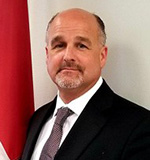
Northern Affairs Organization
Assistant Deputy Minister
Serge Beaudoin

Chief Finances, Results and Delivery Officer
Annie Boudreau

Corporate Secretariat
Corporate Secretary
Kate Ledgerwood

Human Resources and Workplace Services
A/ Director General
Geoff Zerr

Communications
Director General
Aruna Sadana

Audit and Evaluation
Chief Executive
Stephanie Barozzi
Financial overview
Crown-Indigenous Relations and Northern Affairs Canada's 2019-20 Main Estimates total $7 billion.
Crown-Indigenous Relations and Northern Affairs Canada's 2019-20 Main Estimates are comprised of:
- approximately $3.3 billion or 48% in operating expenditures
- approximately $2.7 billion or 38% in transfer payments to Indigenous organizations
- approximately $0.9 billion or 13% for various Budget 2019 initiatives
- approximately $5.5 million in capital expenditures
- $56 million in loan funding for claimants involved in negotiations
Operating expenditures
Through operating funding, the Department also carries out activities related to the assessment, management and remediation of federal contaminated sites, and continues to meet obligations pursuant to the Indian Residential Schools Settlement Agreement. Operating expenditures include time-limited funding of $2.0 billion for Childhood Claims settlement and $750.0 million for the "Sixties Scoop" settlement.
Transfer payments
Through transfer payments, the Department settles and implements comprehensive land claims and self-government agreements, resolves specific and special claims and expeditiously addresses legal rights, supports negotiation and implementation processes, supports lands and environmental management and economic development, and advances work in the North.
Some of Crown-Indigenous Relations and Northern Affairs Canada's major transfer payments are:
- $681.7 million in Grants to First Nations to settle specific claims negotiated by Canada and/or awarded by the Specific Claims Tribunal, and to Indigenous groups to settle special claims
- $674.2 million in Grants to implement comprehensive land claims and self-government agreements and other agreements to address Section 35 Rights
- $397.8 million in Contributions to support the negotiation and implementation of Treaties, Claims and self-government agreements or initiatives
- $167.7 million in Contributions to support Land Management and Economic Development
- $113.7 million in Contributions to First Nations for the management of contaminated sites
- $112.4 million in Contributions for promoting the safe use, development, conservation and protection of the North's natural resources, and promoting scientific development for Indigenous Peoples and the North
- $93.3 million in Contributions to support access to healthy foods in isolated northern communities
As per Order in Council P.C. 2019-1109, some branches and sectors have been transferred from Crown-Indigenous Relations and Northern Affairs Canada to Indigenous Services Canada. This transfer has not been reflected in the figures above as it is still being finalized.
Human resources overview
Crown-Indigenous Relations and Northern Affairs Canada has its main base of operations in the National Capital Region. It also has a presence across the country in regional offices. There are a total of 2,010 employees in the Department, of which 1,382 work in the National Capital Region. The remaining 628 employees are based in regions. There are 165 employees in the Vancouver office who support the negotiation and implementation of comprehensive land claims and self-government agreements, while another 129 employees work out of the various Indigenous Services Canada regional offices, often as part of an internal shared services model.
The northern regional landscape
Crown-Indigenous Relations and Northern Affairs Canada's northern regional offices in Whitehorse, Yellowknife and Iqaluit support northern Canadians in their efforts to improve social and economic well-being, to develop healthier, more sustainable communities and to participate more fully in Canada's political, social and economic development. The regional office in Whitehorse in Yukon has 100 employees, while the Northwest Territories office in Yellowknife has 114 employees, and the Nunavut office in Iqaluit has 120 employees.
Impact of the dissolution of Indigenous and Northern Affairs Canada
Subsequent to the announcement of the dissolution of Indigenous and Northern Affairs Canada and the establishment of Crown-Indigenous Relations and Northern Affairs Canada and Indigenous Services Canada, units supporting the specific mandates of the new departments were transferred between them. As part of the establishment of both departments, a shared service model was established where some corporate level activities are shared between them, including Human Resources and Communications functions. These shared services have reduced the overall amount of internal services available for the departments.
What we do
The core purposes of the Department are to support Canada's efforts for Reconciliation by addressing historic wrongs, to ensure the fulfillment of its obligations towards Indigenous peoples and to shape the nature of the Crown-Indigenous relationship, as well as to support promote the self-reliance, prosperity and well-being of residents and communities of the North. Since 2015, there has been increased emphasis on – and heightened expectations related to – key areas that underscore the Crown-Indigenous relationship, including: co-development of legislative and policy proposals; the implementation of the United Nations Declaration on the Rights of Indigenous Peoples; and the advancement of Reconciliation as an overarching goal. The topics discussed in this section present an overview of the current business lines of the Department supporting these purposes, the work to date on leading files and, the degree of advancement in the development of new policies.
Renewal of Crown-Indigenous relationships
The historic relationship between the Government of Canada and First Nation, Inuit and Métis peoples has been challenging and complex. The Department has sought to establish new approaches to rejuvenate this relationship and find a constructive path forward to advance Indigenous economic and social participation and self-determination. A key element of this approach has been to engage organizations representing First Nations, Inuit and Métis in high level meetings to discuss priorities and interests. Recent commissions and inquiries, such as the Missing and Murdered Indigenous Women and Girls Inquiry and the Truth and Reconciliation Commission, have provided recommendations which directly affect the Crown-Indigenous relationship by setting out a way forward. Federal responses to these reports require a coordinated approach among federal departments and with a range of other players including provincial and territorial governments. The Department plays a leadership role in these coordinated approaches.
Negotiation of comprehensive land claims, specific claims and self-government agreements
Many treaties were concluded between the Crown and Indigenous peoples prior to Confederation to address Indigenous rights and interests, but there remains a significant number of communities with outstanding claims and interests to lands and resources. Some claims are addressed by comprehensive land claims agreements, often called "Modern Treaties", to resolve outstanding Indigenous interest to lands and resources, while other claims address grievances of improper administration of lands and assets or treaty obligations and are addressed through the Specific Claims process. Self-government agreements, on the other hand, are to establish local governance by communities outside of the Indian Act. The Department is working to address these outstanding claims through improved collaboration between governments and Indigenous groups, based on mutual respect, trust, understanding, shared responsibilities, accountability, dialogue and negotiation concerning the rights and interests of Indigenous peoples. The Department coordinates the federal government's interests in these negotiations.
Management and implementation of existing agreements and treaties
Of the many Modern Treaty agreements that have been concluded since the 1970s, several have resulted in court rulings indicating failures in Canada's implementation of modern and historic treaties. The Department provides oversight on the efficient implementation of settlement agreements and treaties, creating and maintaining ongoing partnerships to support this goal.
As a result of court rulings citing shortcomings relating to infringement of Aboriginal and treaty rights, Crown-Indigenous Relations and Northern Affairs Canada also supports federal departments and agencies to fulfill the Crown's legal duty to consult Indigenous peoples whose asserted or established Aboriginal or treaty rights may be impacted by a federal activity, and coordinates the federal approach to the United Nations Declaration on the Rights of Indigenous Peoples.
Resolution of childhood claims
Historical programs and policies of assimilation, such as Indian Residential Schools, have had deep and long-lasting negative impacts on Indigenous peoples and their communities. A number of processes have been established to address and compensate individuals affected by these policies. These processes support a claimant-centered, non-adversarial, out-of-court process to resolve claims of sexual abuse and serious physical abuse. While the resolution of claims relating to residential schools is coming to an end, processes are in place to address the legacy of other wrongful acts, such as the "Sixties Scoop" and Indian Day Schools.
Indigenous institutions and governance modernization
Economic self-sustainability is an important element of Indigenous self-determination. To support this goal, the Department has established programs and policies to bring greater economic flexibility to First Nation communities. Through the First Nations Fiscal Management Act and the fiscal institutions it creates, First Nations are able to opt out of specific provisions of the Indian Act allowing for greater fiscal management and taxation powers. These programs also include developing governance and institutional mechanisms, strengthening Indigenous financial management and treasury functions, and facilitating access to market capital.
Control and management of local lands and resources are another important element to advance self-determination. The First Nations Lands Management Act provides mechanisms for communities to gain greater control of their lands and resources by coming out from under the Indian Act. Over 150 First Nations now have control of their lands and negotiations with other communities are ongoing.
Additions to Reserve (the addition of parcels of land to an existing reserve), is another area of Crown-Indigenous Relations and Northern Affairs Canada's work, in collaboration with Indigenous Services Canada, which manages reserve lands under the Indian Act. An addition to reserve can serve many functions, including fulfilling a legal obligation, improving community access to land and resources, and increasing community and economic development for First Nations.
Northern governance
A focus of the Department has been the improvement of governance structures and mechanisms in the Canadian North. A key activity in this area has been the transfer of federal responsibilities for lands and natural resources to territorial governments (called "devolution") to ensure greater local control, as well as fostering effective relations with territorial and Inuit governments.
Northern policy and programs
Crown-Indigenous Relations and Northern Affairs Canada also works with Inuit organizations and other territorial partners to help meet the needs and interests of Northerners in areas such as food security, hospital and physician services in Nunavut and the Northwest Territories, economic development, climate change and reduced reliance on diesel. The Department also advances Canadian and northern interests through forums such as the international Arctic Council.
Northern science and technology
The Northern Affairs portfolio has long played a central role in supporting scientific research and technology in the North through programs and infrastructure to ensure domestic and international policy on key northern issues is better informed by a scientific knowledge base. To do so, its focus is to: research and monitor contaminants and their impacts on the ecosystem and human health through the Northern Contaminants Program; assess, manage and communicate scientific data and results, and contribute expertise to help inform public policy making and international controls on certain contaminants; and support the maintenance of the Canadian High Arctic Research Station.
Northern land, resources and environmental management
While striving to increase the transfer of federal responsibilities to territorial governments, the federal government, through the Department's administration of Northern Affairs, retains responsibility over some lands and resources in the North. As a result, several programs and policies focus on the management, sustainable development and regulatory oversight of the land, water, natural resources, and environment of the North. Northern Affairs also manages the Department's role as the Government of Canada's natural resource manager in Nunavut and the northern offshore and its post-devolution responsibilities in the Northwest Territories and Yukon. Of specific note, this involves: managing oil and gas resources development; supporting the sustainable management of active mineral exploration and development; supporting the sound management of contaminated sites and the few remaining Crown-Indigenous Relations and Northern Affairs Canada-managed land and water areas in the North; and ensuring the completion of territorial land-use planning including zones for conservation, development and other uses.
Issues currently in the public eye
The following issues may be raised by the public or partners in the early days of the mandate.
I will be pleased to brief you on these and other more forward-looking issues over the coming weeks.
Crown-Indigenous Relations
National inquiry into missing and murdered Indigenous women and girls
- "Reclaiming Power and Place: The Final Report of the National Inquiry into the Missing and Murdered Indigenous Women and Girls" was released to the public on June 3, 2019. The National Inquiry's Final Report identifies 231 Calls for Justice that are far-reaching, directed at governments, institutions, social service providers, industries and all Canadians and will require underlying systemic issues to be addressed. The Calls for Justice are presented under 4 themes: Culture, Health and Wellness, Human Security/Safety, and Justice.
- Crown-Indigenous Relations and Northern Affairs Canada is working with other federal departments, provincial and territorial governments and Indigenous partners to address the Calls for Justice and co-develop the National Action Plan with the intention of improving the quality of life for Indigenous women, girls, and Two-Spirit, lesbian, gay, bisexual, transgender, queer, questioning, intersex and asexual people.
Considerations:
- The scope of the Inquiry's recommendations is wide-ranging and could require systemic changes to the operations and programs of a number of government departments, as well as provincial and territorial counterparts.
- A thorough review of the Inquiry's final report and its recommendations is required to inform further actions to prevent and eliminate violence against Indigenous women and girls.
- Stakeholders in the report, as well as Indigenous leadership, likely expect that the development of a response would be done through an engagement process with Indigenous partners, and provincial and territorial counterparts.
United Nations declaration on the rights of Indigenous peoples
- The United Nations Declaration on the Rights of Indigenous Peoples (the Declaration) was passed by the UN General Assembly in 2007 and is an international instrument whose principles describe the economic, social, cultural, civil and political rights that "constitute the minimum standards for the survival, dignity and well-being of the indigenous peoples of the world" (Article 43).
- In May 2016, the Government announced that Canada is now a full supporter of the Declaration, without qualification, and that it will adopt and implement the Declaration in accordance with the Canadian constitution.
Considerations:
- Indigenous partners have high expectations that the federal government will continue advancing implementation of the Indigenous rights outlined in the Declaration, through meaningful consultation and collaboration.
- There is a diverse range of perspectives with respect to implementation of the Declaration and its overall role, including the application of free, prior and informed consent and how the Declaration will be applied within an existing federal, Indigenous, provincial and territorial environment.
- Regardless of the approaches adopted by government, the Declaration will continue to have profile both domestically and internationally and federal departments will require guidance on its meaning, and how it may influence their day-to-day work, including the development of laws and policies.
Co-development
- Co-development between the Crown and Indigenous peoples is an approach taken by Canada in recent years to negotiations and the development of policy and legislative proposals. Indigenous peoples have long advocated for this approach.
- While there is no one universally accepted definition of co-development, Canada has broadly understood it in the Crown-Indigenous context as referring to how the Crown and Indigenous peoples can actively engage and collaborate together to inform the development of common proposals.
Considerations:
- Indigenous expectations are high that the Government of Canada will adopt an approach to policy development based on co-development principles.
- Many challenges remain regarding co-development, such as arriving at a consistent definition and approach, the length of time and flexibility of processes, increased workloads for participating parties, financial requirements, and the diverse policy direction that can result. Of particular note, there is a need to develop specific approaches to address situations where agreement in the final policy and legislative proposal cannot be reached. Regardless of the nature of the co-development process, Cabinet maintains its decision-making authority.
Childhood claims
- Indigenous Childhood Claims Litigation include class actions, individual and multi-plaintiff litigation related to the "Sixties Scoop", Indian Residential Schools Day Scholars, Indian Days Schools, Indian Hospitals, Indian Boarding homes, provincial residential schools, joint schools and other historic education and care programming. These claims fall outside of the Indian Residential Schools Settlement Agreement.
- Recent settlement agreements between the Government of Canada and Indigenous peoples signify progress on its commitment to resolving Childhood Claims outside of the courts.
Considerations:
- While much progress has been made in resolving Childhood Claims outside of the courts, litigation and exploratory discussions on several class actions is ongoing.
- Indigenous Childhood Claims Litigation garners significant media attention due to the sensitive nature of the allegations.
- Redacted.
Truth and Reconciliation Commission calls to action
- In 2015, the Truth and Reconciliation Commission of Canada called on the Government of Canada, provincial/territorial governments, churches, corporations and schools to implement 94 Calls to Action. Out of the 94 Calls to Action, 44 are under the responsibility of the federal government alone, 32 are under joint responsibility between the federal government and other key parties, and 18 are under non-federal responsibility.
- To date, over 80 per cent of the Calls to Action under the responsibility of the federal government alone or shared responsibility between the federal government, provincial/territorial governments and other key partners, are complete or underway.
Considerations:
- Indigenous expectations for continued implementation of the Calls to Action, as well as those of a broad range of interested parties, are high and a government response will be closely scrutinized.
- Indigenous leaders view the implementation of the Calls to Action as part of ongoing relationship and commitments upon the Government of Canada.
- As a response to the Calls to Action is not limited to a single department, implementation could have an impact on other federal departments, as well as provincial and territorial counterparts.
Litigation
- Indigenous groups may choose to pursue litigation, which can bring greater clarity of Aboriginal and treaty rights. Litigation has done so on various important issues such as Indigenous title (e.g. Tsilhqot'in); entitlement to registration as status Indians (e.g. Descheneaux); and harvesting/fishing and hunting rights (e.g. Marshall).
- Crown-Indigenous Relations and Northern Affairs Canada has an active inventory of 366 cases, with an additional 764 open cases. Active cases have at least 5 days per year of Case Manager caseload and/or tribunal activity. Open (or Inactive) Cases are litigation cases that have been filed in court, but where little to no activity has been recorded in a given year. They are essentially dormant.
- Indigenous peoples are fully entitled to choose litigation to resolve legal issues, and the Government continues to recognize that some issues will require legal clarification. The litigation landscape has also shifted in recent years – from issues relating to Aboriginal and treaty rights to shortcomings in the delivery of services for Indigenous peoples.
- Litigation accounts for 30% ($6.6 billion) of the Department's $22.4 billion contingent liability (this liability also includes settlements for Specific Claims, Comprehensive Land Claims and Special Claims). The departmental contingency represents 85% of the total contingent liability of the Government of Canada ($26.4 billion).
- Key active litigation files for the Department include Restoule (treaty annuities and revenue sharing), Jim Shot Both Sides (Treaty Land entitlement) and McLean (Indian Day Schools).
Considerations:
- Indigenous litigation is often of a complex nature and cases can be ongoing for long periods of time. The litigation can deal with issues that are historic in nature, which in many cases have been long standing grievances.
- Though Canada has consistently favoured negotiations of these claims over litigation, it has been criticized in the past for its "litigate or negotiate" policy whereby claims would be refused through negotiation processes if there was active litigation on the same issue.
Indigenous Peoples Space ("100 Wellington")
- In June 2017, the Prime Minister announced that the former United States Embassy at 100 Wellington Street in Ottawa on the traditional territory of the Algonquin Peoples would be transformed into a national space for Indigenous peoples.
- The Assembly of First Nations, Inuit Tapiriit Kanatami and the Métis National Council were first engaged by Crown-Indigenous Relations and Northern Affairs Canada and Public Services and Procurement Canada to advance the project in early 2018.
- Meetings held with Indigenous partners in late August/early September 2019 have confirmed that there continues to be disagreement and a difference in opinions with respect to the scope of the partnership and how best to move forward with the initiative.
Considerations:
- The position of Inuit and the Métis Nation was that the partnership should remain as tri-lateral between First Nations, Inuit and the Métis Nation to ensure equal voices at the table. There was, and continues to be, strong support to ensure that Algonquin traditional territory was acknowledged, recognized and respected. Expectations amongst Indigenous partners remain high that this initiative will be completed by 2020.
- The Government will need to confirm its direction on the way forward for the Indigenous Peoples' Space. This will include understanding whether or not any limits on expectations should be communicated to Indigenous partners regarding resolution.
Northern Affairs
Nunavut Planning Commission
- The Nunavut Planning Commission was established in 1993, pursuant to the Nunavut Land Claims Agreement, and is responsible for preparing land use plans. In 2007, the Commission began developing a single land use plan for all of Nunavut which, when approved, would replace the two regional plans.
- An approved land use plan for Nunavut would provide for the conservation, use of land, and guide and direct the use of resources and development. In so doing, the Plan would provide certainty to the resource development industry, Inuit organizations, and the federal and territorial governments that land use decisions taken in accordance with the Plan would meet the objectives of Nunavut residents and communities and contribute to their well-being.
Considerations:
- Several drafts of the Nunavut Land Use Plan have been prepared, however none has been submitted for approval. The development of an effective plan for the management of Nunavut's lands and resources requires collaboration on the part of all parties – the federal government, the Government of Nunavut and Inuit organizations.
Food security
- Food insecure households are those that are uncertain of having, or unable to acquire, enough food to meet the needs of all their members. Food insecurity in Northern and isolated communities poses significant challenges which directly affect the health and well-being of Northerners.
- Food security is a complex challenge with many variables. The Government of Canada has a number of programs and initiatives, such as Nutrition North Canada, the Harvester's Support Grant, and the Canadian Northern Economic Development Agency's Community Innovation Initiative, that are aimed at strengthening nutritional choices, food security, and community health.
Considerations:
- Addressing food security is a complex issue that cannot be solved by a single jurisdiction or program, but rather requires collaboration with Northern partners and a set of direct and indirect measures to improve access and affordability through a range of local and transported goods.
- This includes direct targeted measures to: reduce the cost of food to consumers, develop local food systems, ensure the safety of country and traditional food, and diversify transportation options in remote communities.
- It also includes indirect measures to address poverty, access to education and skills training.
Indigenous partners
Assembly of First Nations
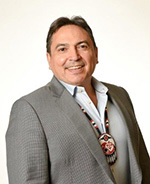
The Assembly of First Nations is a national advocacy organization representing over 634 First Nation communities (over 900,000 people) across the country. The Assembly of First Nations holds that First Nations' unique and special relationship with the Crown is grounded in inherent and Aboriginal rights in title, treaties and negotiated agreements.
National Chief: Perry Bellegarde
Contact Information: Redacted
Perry Bellegarde was elected the Assembly of First Nations National Chief in 2014 and re-elected in 2018. He has spent his entire adult life putting into practice his strong beliefs in the laws and traditions instilled in him by the many Chiefs and Elders he has known over the years. Passionate about making measureable progress on the issues that matter most to First Nations people, National Chief Bellegarde is a strong advocate for the implementation of Inherent Aboriginal and Treaty Rights. Widely known as a consensus builder with a track record of accomplishment, he brings community people, leaders, Chiefs and Elders together to focus on working cooperatively to move issues forward.
Métis National Council

Formed in 1983, the Métis National Council's central goal is "to secure a healthy space for the Métis Nation's ongoing existence within the Canadian federation." The Métis National Council represents five Governing Members: the Métis Nation of Ontario, the Manitoba Metis Federation, the Métis Nation-Saskatchewan, the Métis Nation of Alberta and the Métis Nation British Colombia. Together they serve the Métis Nations by representing them at the community, regional, provincial, national and international level.
Vice President: David Chartrand
Contact Information: 613-232-3216
David Chartrand is a Métis politician and aboriginal activist in Manitoba, Canada, who is the current leader of the Manitoba Metis Federation. He has served as the President of the Manitoba Metis Federation from 1997 to the present and is also a member of the Board of Governors of the Métis National Council.
Inuit Tapiriit Kanatami

Founded in 1971, Inuit Tapiriit Kanatami is the national voice of approximately 55,000 Inuit living primarily in 53 communities in four Inuit land claim regions (Inuvialuit Settlement Region – Northwest Territories, Nunavut, Nunavik – Northern Quebec, and Nunatsiavut – Northern Labrador). Inuit Tapiriit Kanatami represents and promotes the interests of Inuit on a wide variety of environmental, social, cultural, and political issues. Inuit Tapiriit Kanatami's Board is made up of the Presidents of Inuit Tapiriit Kanatami, and the four Inuit land claim organizations (Nunavut Tunngavik Incorporated, Makivik Corporation, the Nunatsiavut Government and the Inuvialuit Regional Corporation) as well as the President of Inuit Circumpolar Council (Canada). The presidents of the National Inuit Youth Council and Pauktuutit Inuit Woman of Canada are ex-officio members.
President: Natan Obed
Contact Information: Redacted
Mr. Obed was re-elected to a three-year term as President of Inuit Tapiriit Kanatami in 2018. In the 1990s, Mr. Obed left his home in Nain, Nunatsiavut, to get a bachelor's degree in English and American Studies at Boston's Tufts University. After that he went to work for the Labrador Inuit Association, helping negotiate an Inuit impacts and benefits agreement with respect to the Voisey's Bay nickel mine. From there, he served nearly two years as Inuit Tapiriit Kanatami's director of socio-economic development before moving to Iqaluit to become director of social and cultural development for Nunavut Tunngavik Incorporated.
Congress of Aboriginal Peoples

The Congress of Aboriginal Peoples is a pan-Indigenous national representative organization for Métis, Non-Status and Status Indians living off reserve in Canada. It is a confederation of provincial affiliates, with its strength lying mainly from Quebec eastwards. The Congress has five Crown-Indigenous Relations and Northern Affairs Canada funded affiliate Indigenous Representative Organizations: Native Alliance of Québec, New Brunswick Aboriginal Peoples Council, Native Council of Prince Edward Island, Native Council of Nova Scotia, and the NunatuKavut Community Council (Labrador).
National Chief: Robert Bertrand
Contact Information: 613-747-6022
Robert Bertrand is the National Chief of the Congress of Aboriginal Peoples. Chief Bertrand was elected in 2016 during the Congress of Aboriginal Peoples' 45th Annual General Assembly. Having served as President and Grand Chief at the Native Alliance of Québec from 2011-2016 and as Member of Parliament for the riding of Pontiac-Gatineau-Labelle from 1993-2004, Chief Bertrand brings a broad experience in public administration, government relations and representation of Indigenous and non-Indigenous citizens.
Native Women's Association of Canada
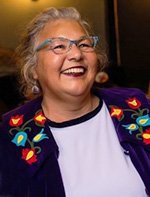
The Native Women's Association of Canada is founded on the collective goal to enhance, promote, and foster the social, economic, cultural and political well-being of First Nations and Métis women. The Native Women's Association of Canada is an aggregate of thirteen Native women's organizations from across Canada and was incorporated as a non-profit organization in 1974. The organization's mission is to help empower women by being involved in developing and changing legislation which affects them, and by involving them in the development and delivery of programs promoting equal opportunity for Aboriginal women.
President: Lorraine Whitman
Contact Information: 613-722-3033
Lorraine Whitman is a member of Glooscap First Nation in Nova Scotia. She served Glooscap First Nation as an elected councillor from 1997–2012, sat on the Board of Directors of the Confederacy of Mainland Mi'kmaq for more than 15 years. In 2017, Lorraine was elected president of the Nova Scotia Native Women's Association and became an Elder for Acadia University. She is also a recipient of the Nova Scotia Volunteer Award (2019). Most recently, she was elected president of the Native Women's Association of Canada in September 2019.
Pauktuutit Inuit Women of Canada
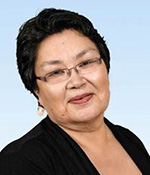
Pauktuutit Inuit Women of Canada is a National Indigenous Organization whose purpose is to represent and speak at the national level, on behalf of Inuit women in Canada.
President: Rebecca Kudloo
Contact Information: 613-238-3977
Rebecca Kudloo is the President of Pauktuutit Inuit Women of Canada. She was born on the land outside Iglulik, Nunavut, and now lives in Baker Lake, Nunavut. Rebecca speaks Inuktitut and English fluently and enjoys working with people of all ages. She was first elected as President in 2014 and previously served on the Pauktuutit Board as the Vice President and Regional Director for the Kivalliq region of Nunavut. As President, she represents Pauktuutit on the Board of Directors of Inuit Tapiriit Kanatami and Inuit Circumpolar Council Canada.
First Nations Tax Commission
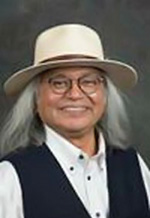
The First Nations Tax Commission is a shared-governance First Nation public institution that operates at arm's-length from the federal government. It supports the implementation of First Nations' property taxation regimes under the First Nations Fiscal Management Act and under section 83 of the Indian Act. In addition to advocating for the advancement of First Nations' fiscal jurisdiction and new areas of revenues, the Commission is supporting the First Nations Infrastructure Institute Development Board in its efforts to develop a national institution providing First Nations with infrastructure planning, procuring, financing and management capacity. The First Nations Fiscal Management Act sets out the First Nations Tax Commission's purposes, functions, and powers.
Chief Commissioner: C.T. (Manny) Jules
Contact Information: 250-828-9857
Chief Commissioner C.T. (Manny) Jules was the driving force behind the First Nations Fiscal Management Act (2005), which created the First Nations Tax Commission. He also led the amendment to the Indian Act (1988) which enabled First Nations to levy property taxes on designated lands. The Indian Taxation Advisory Board and the current First Nation property tax system were created as a result. Mr. Jules served as Chair of the Indian Taxation Advisory Board from 1989-2003 and 2005-2007. He served as Chief of the Kamloops Indian Band from 1984-2000. Mr. Jules has devoted over 30 years of his life to public service in support of Aboriginal issues and received an Honorary Doctorate of Laws from the University of British Columbia (1997) and another from Thompson Rivers University (2006).
First Nations Financial Management Board

The Financial Management Board is a shared-governance public institution that operates at arm's-length from the federal government. The Financial Management Board assists First Nations in strengthening local financial management regimes, provides independent certification of First Nations' financial performance and systems and manages intervention mechanisms for the First Nations Fiscal Management Act regime. The Board is also working collaboratively with Indigenous Services Canada on the implementation of the 10-year Grants initiative and has been piloting a new approach to strengthen the governance capacity of First Nations who are in default with the conditions in their funding agreements. The First Nations Fiscal Management Act sets out Financial Management Board's purposes, functions, and powers.
Executive Chair: Harold Calla
Contact Information: 604-925-6665 ext 223
Harold Calla is a member of the Squamish Nation located in North Vancouver, British Columbia. After many years of experience in international business, he worked with the Squamish Nation as a negotiator in the areas of economic development, land management and finance and served eight years on the Squamish Council. He has also acted as an advisor and an arbitrator for First Nations in Western Canada.
He has completed terms on the Boards of Canada Mortgage and Housing Corporation, Partnerships BC and the Nicola Valley Institute of Technology, and has either chaired or served on audit committees of these various boards. Harold is a recipient of numerous awards in recognition of excellence in leadership. In particular, the Certified General Accountants Association of Canada celebrating its 100th year in 2008 recognized him as one of 100 Certified General Accountants who, in its view, have influenced changes. In August 2012, Harold was also awarded a fellowship by the Certified General Accountants Association of Canada. Harold is a member of the Aboriginal Financial Officers Association and has been awarded the designation of Certified Aboriginal Financing Manager.
First Nations Finance Authority

The First Nations Finance Authority is a statutory not-for-profit organization without share capital, operating under the authority of the First Nations Fiscal Management Act, 2005. The First Nations Finance Authority's purposes are to provide First Nations governments with investment options, capital planning advice and perhaps most importantly, access to long-term loans at preferable interest rates. The First Nations Finance Authority is governed solely by the First Nations communities that join as borrowing members. The Authority is also exploring innovative infrastructure financing approaches for First Nations to leverage government transfers for long-term loans. The First Nations Fiscal Management Act sets out the First Nations Finance Authority's purposes, functions, and powers.
President and CEO: Ernie Daniels
Contact Information: 250-768-5253
Ernie Daniels is a Certified General Accountant and a Certified Aboriginal Financial Manager. Ernie moved from Ottawa to Kelowna in fall 2011 to work with the First Nations Finance Authority as Director of Finance and was appointed President/CEO in June 2012. Prior to coming to the First Nations Finance Authority, Ernie was President/COO of the Aboriginal Financial Officers Association of Canada for 7 years and the Director of Assessment and Finance Operations at the Aboriginal Healing Foundation for 5 years. He has worked at a number of Aboriginal non-for-profit organizations in leadership and management positions. He was a member of the CICA Research Study Group looking at financial reporting by First Nations and has served as Chair of the Northwest Territories Legislative Assembly Society, Chair of the Northwest Territories Development Corporation and is a former Board member of the First Nations Financial Management Board.
Other key contacts

Chief Wilton Littlechild, Ph.D.
Contact Information: 780-944-0334
Wilton Littlechild, Ph.D., is a Cree chief, residential school survivor, and lawyer who has worked both nationally and internationally including with the United Nations to advance Indigenous rights and Treaties. He has also – through leadership with the Truth and Reconciliation Commission – raised awareness of former Canadian policies that decimated the livelihood and culture of Indigenous Canadians. Chief Littlechild has been a member of Parliament, Vice-President of the Indigenous Parliament of the Americas, North American representative to the United Nations Permanent Forum on Indigenous Issues, and a chairperson for the United Nations Expert Mechanism on the Rights of Indigenous Peoples and the Commission on First Nations and Métis Peoples and Justice Reform.

Mary Ellen Turpel-Lafond
Contact Information: 604-822-6941
Mary Ellen Turpel-Lafond is a member of Saskatchewan's Muskeg Lake Cree Nation and in 1998 was the first Indigenous woman appointed to the judicial bench of the Provincial Court of Saskatchewan. During her time on the bench, she was actively involved in projects relating to access to justice, judicial independence and public outreach. She has also worked as a criminal law judge in youth and adult courts, with an emphasis on better serving the needs of young people in the justice system, focusing on sexually exploited children and youth and children with disabilities.
The First Nations Summit Task Group (British Columbia)
The First Nations Summit Task Group are the Political Executive of the First Nations Summit. The Political Executive members are elected and authorized by Summit Chiefs in Assembly to carry out specifically-mandated tasks on issues related to treaty negotiations in British Columbia. The Political Executive members elected by the First Nations Summit Chiefs at the June 2019 Assembly are effective until June 2022.
Contact Information: C/O Mr. Howard Grant, Executive Director (604-926-9903).

Cheryl Casimer
First Nations Summit Executive
Cheryl Casimer is a citizen of the Ktunaxa Nation and is from the community of ?aq̓am, which is located near Cranbrook in the southeastern corner of British Columbia. Ms. Casimer is a former Chief and Councillor of the ?aq̓am First Nation. Ms. Casimer has served on numerous boards and committees over the past 20 years, including one term as Co-Chair of the First Nations Summit (2002-2004) and one term as a board member of the British Columbia Assembly of First Nations. Ms. Casimer was elected in June 2019 for a third consecutive term on the First Nations Summit Political Executive.

Robert Phillips
First Nations Summit Executive
Robert Phillips is a member of the Northern Secwepemc te Qelmucw (Shuswap) of the Canim Lake First Nation. He holds a Bachelor of Arts degree from the University College of the Fraser Valley. Phillips was previously elected by First Nations Summit delegates to three terms as a Commissioner of the British Columbia Treaty Commission (2007-2013). He also previously served as Chief Negotiator, and prior to that, as Self-Government Director at the Northern Shuswap Tribal Council (1998-2007). Mr. Phillips was elected in June 2019 for a third consecutive three-year term.

Lydia Hwitsum
First Nations Summit Executive
Lydia Hwitsum is a citizen of the Cowichan Nation located in Duncan on Vancouver Island where she previously served four two-year terms as the elected Chief of the Cowichan Tribes. She is currently a member of the Royal Roads University Board of Governors. Ms. Hwitsum holds a Certificate of Administration of Aboriginal Governments and a Diploma in Public Sector Management from the University of Victoria. She holds a Juris Doctor degree from the University of Victoria. Ms. Hwitsum was elected in June 2019 to a second term on the First Nations Summit Political Executive. She previously served on the Political Executive from 2002-2004.
Provincial and territorial ministers
British Columbia
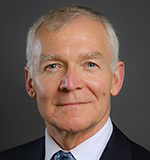
Hon. Scott Fraser
Minister of Indigenous Relations and Reconciliation
Contact Information: 250-953-4844
Alberta

Hon. Rick Wilson
Minister of Indigenous Relations
Contact Information: 780-422-4144
Saskatchewan

Hon. Lori Carr
Minister of Government Relations
Contact Information: 306-787-6100
Manitoba
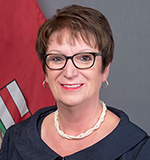
Hon. Eileen Clarke
Minister of Indigenous and Northern Relations
Contact Information: 204-945-0565
Ontario

Hon. Greg Rickford
Minister of Indigenous Affairs
Contact Information: 416-327-4464
Québec

Hon. Sylvie D'Amours
Minister Responsible for Indigenous Affairs
Contact Information: 418-528-8407
New Brunswick

Hon. Jake Stewart
Minister Responsible for Aboriginal Affairs
Contact Information: 506-444-4835
Nova Scotia

Hon. Stephen McNeil
Premier and Minister of Aboriginal Affairs
Contact Information: 902-424-6600
Prince Edward Island
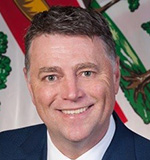
Hon. Dennis King
Premier and Minister of Indigenous Relations
Contact Information: 902-368-4400
Newfoundland
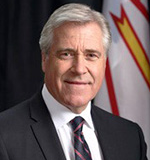
Hon. Dwight Ball
Premier and Minister for Intergovernmental and Indigenous Affairs
Contact Information: 709-729-3570
Yukon

Hon. Sandy Silver
Premier
Contact Information: 867-393-7007
Northwest Territories
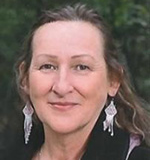
Hon. Caroline Cochrane
Premier and Minister of Executive and Indigenous Affairs
Contact Information : 867-767-9140
Nunavut
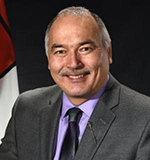
Hon. Joe Savikataaq
Premier and Minister of Aboriginal Relations
Contact Information: 867-975-5050
Annex A: Acts and legislation
Comprehensive land claims legislation
| British Columbia Treaty Commission Act | S.C., 1995, c. 45 |
| Cree-Naskapi (of Quebec) Act | S.C., 1984, c. 18 |
| Eeyou Marine Region Land Claims Agreement Act | S.C., 2011, c. 20 |
| Gwich'in Land Claim Settlement Act | S.C., 1992, c. 53 |
| James Bay and Northern Quebec Native Claims Settlement Act | S.C., 1976–77, c. 32 |
| Labrador Inuit Land Claims Agreement Act | S.C., 2005, c. 27 |
| Maanulth First Nations Final Agreement Act | S.C., 2009, c. 18 |
| Nisga'a Final Agreement Act | S.C., 2000, c. 7 |
| Nunavik Inuit Land Claims Agreement Act | S.C., 2008, c. 2 |
| Nunavut Land Claims Agreement Act | S.C., 1993, c. 29 |
| Sahtu Dene and Metis Land Claim Settlement Act | S.C., 1994, c. 27 |
| Tla'amin Final Agreement Act | S.C., 2014, c. 11 |
| Tlicho Land Claims and Self-Government Act | S.C., 2005, c. 1 |
| Tsawwassen First Nation Final Agreement Act | S.C., 2008, c. 32 |
| Western Arctic (Inuvialuit) Claims Settlement Act | S.C., 1984, c. 24 |
| Yale First Nation Final Agreement Act | S.C., 2013, c. 25 |
| Yukon First Nations Land Claims Settlement Act | S.C., 1994, c. 34 |
Self-government legislation
| Déline Final Self-Government Agreement Act | S.C., 2015, c. 24 |
| Kelowna Accord Implementation Act | S.C., 2008, c. 23 |
| Sechelt Indian Band Self-Government Act | S.C., 1986, c. 27 |
| Sioux Valley Dakota Nation Governance Act | S.C., 2014, c. 1 |
| Westbank First Nation Self-Government Act | S.C., 2004, c. 17 |
| Yukon First Nations Self-Government Act | S.C., 1994, c. 35 |
Specific claims legislation
| Manitoba Claim Settlements Implementation Act | S.C., 2000, c. 33 |
| Saskatchewan Treaty Land Entitlement Act | S.C., 1993, c. 11 |
| Specific Claims Tribunal Act | S.C., 2008, c. 22 |
Land management, fiscal management and taxation legislation
| Addition of Land to Reserves and Reserve Creation Act | S.C. 2018, c. 27, s. 675 |
| First Nations Fiscal Management Act | S.C., 2005, c. 9 |
| First Nations Land Management Act | S.C., 1999, c. 24 |
Northern Affairs legislation
| Arctic Waters Pollution Prevention Act | R.S.C., 1985, c. A-12 |
| Canada Lands Surveys Act | R.S.C., 1985, c. L-6 |
| Canada Oil and Gas Operations Act | R.S.C., 1985, c. O-7 |
| Canada Petroleum Resources Act | R.S.C., 1985, c. 36 |
| Canadian High Arctic Research Station Act | S.C., 2014, c. 39, s. 145 |
| Dominion Water Power Act | R.S.C., 1985 c. W-4 |
| Mackenzie Valley Resource Management Act | S.C., 1998, c. 25 |
| Northern Canada Power Commission (Share Issuance and Sale Authorization) Act | S.C., 1988, c.12 |
| Northern Canada Power Commission Yukon Assets Disposal Authorization Act | S.C., 1987, c. 9 |
| Northwest Territories Act | S.C., 2014, c. 2, s. 2 |
| Northwest Territories Devolution Act | S.C., 2014, c. 2 |
| Nunavut Act | S.C., 1993, c. 28 |
| Nunavut Waters and Nunavut Surface Rights Tribunal Act | S.C., 2002, c. 10 |
| Nunavut Planning and Project Assessment Act | S.C., 2013, c. 14, s. 2 |
| Territorial Lands Act | R.S.C., 1985, T-7 |
| Yukon Act | S.C., 2002, c. 7 |
| Yukon Environmental and Socio-economic Assessment Act | S.C., 2003, c. 7 |
| Yukon Surface Rights Board Act | S.C., 1994, c. 43 |